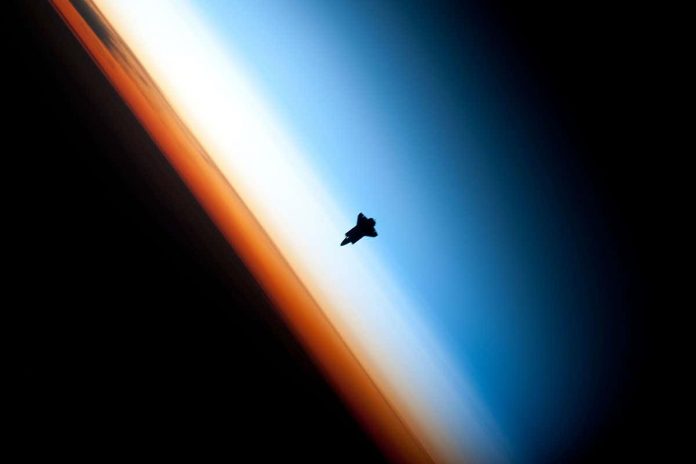[ad_1]

Space shuttle Endeavour in 2010. The orange layer is the troposphere. The whitish layer above it is the stratosphere and above that is the mesosphere
NASA/Crew of Expedition 22
Sunlight could be used to power microfliers travelling above the stratosphere in the mesosphere.
At present, the only vehicles that can travel in this layer of our atmosphere, at an altitude between 50 and 80 kilometres, are rockets destined for space. Aeroplanes and other modern aircraft can’t fly above 50 kilometres because the lower air density at these altitudes doesn’t allow for sufficient lift.
Advertisement
On the flip side, the air in the mesosphere is too dense for the safe passage of satellites and could damage them, so it is off limits for them too.
Igor Bargatin at the University of Pennsylvania and his colleagues have come up with a device that could potentially achieve sustained travel through the mesosphere.
“What we’re looking at is a new mechanism of levitation that has been used in the past for really small particles, ones that you can’t see,” says Bargatin. “But what we’re doing is making it work for structures that are big enough that you can hold them in your hands and therefore, at least potentially, will have real-life applications.”
The technique exploits the phenomenon of photophoresis, which relies on the transfer of solar energy – initially to an object such as the new device, and then to the air molecules surrounding the object.
“When you expose [the device] to sunlight, the molecules that hit the surfaces will absorb some of the heat,” says Bargatin. “We designed the [device] surfaces in such a way that the top surface is not very good at transferring heat whereas the bottom surface is very good at transferring heat and as a result more molecules will gain downward velocity than upward velocity.”
This creates a lift force, he adds, meaning that when the microfliers were exposed to incident light intensity of about 0.5 Watts per square centimetre at air pressures of about 10 Pascals they moved through the air.
The team believes that in the future, versions of the microfliers fitted with sensors could be used to map wind and temperatures in the mesosphere, which could improve climate models.
“In general, it’s unclear how many practical aspects of this technology would work, such as delivering the microfliers to this part of the atmosphere, which would presumably need to be dropped from rockets,” says Karen Aplin at the University of Bristol in the UK. “At the moment, this technology looks like a bit of a solution searching for a problem.”
“I should say that every time a new flight mechanism is implemented or discovered, people find new applications that are hard to think about from the beginning,” says Bargatin.
Journal reference: Science Advances, DOI: 10.1126/sciadv.abe6855
More on these topics:
[ad_2]
Source link











